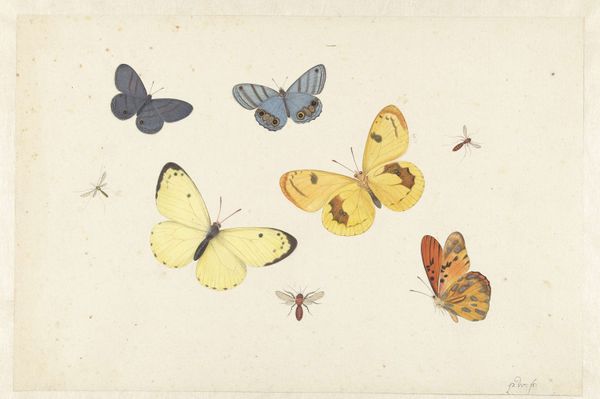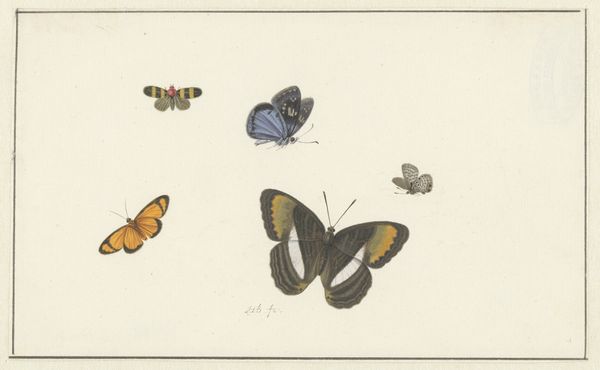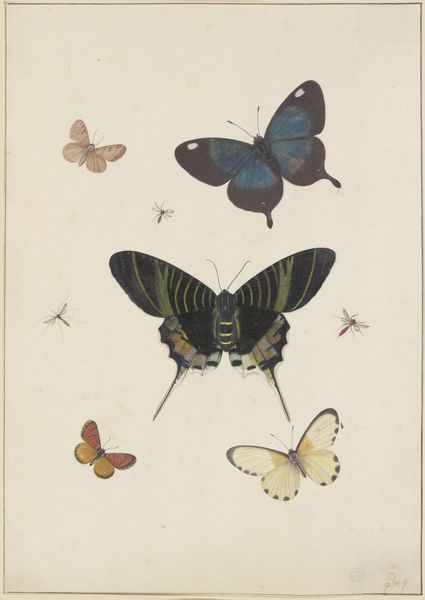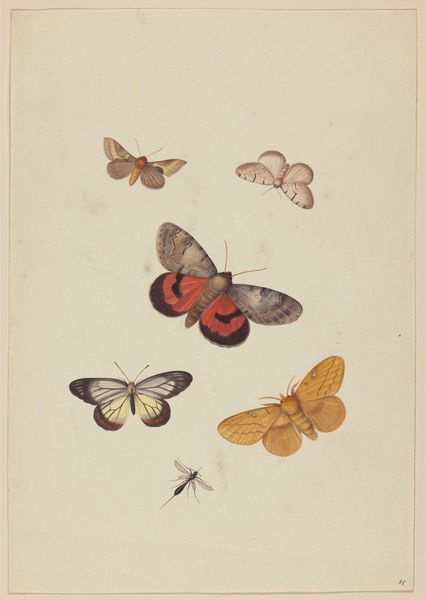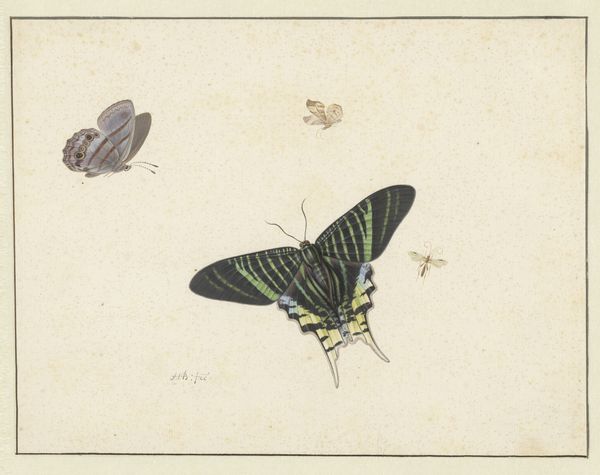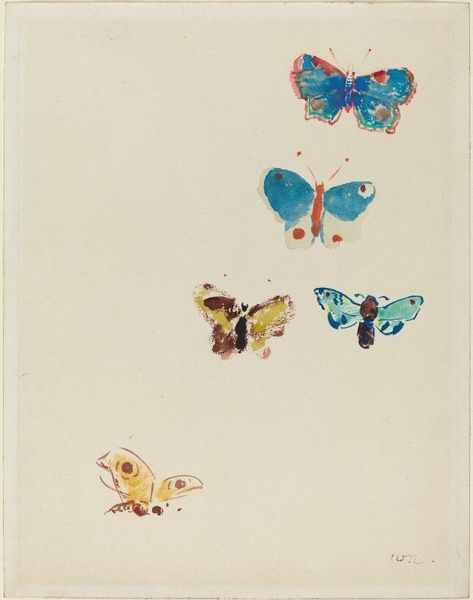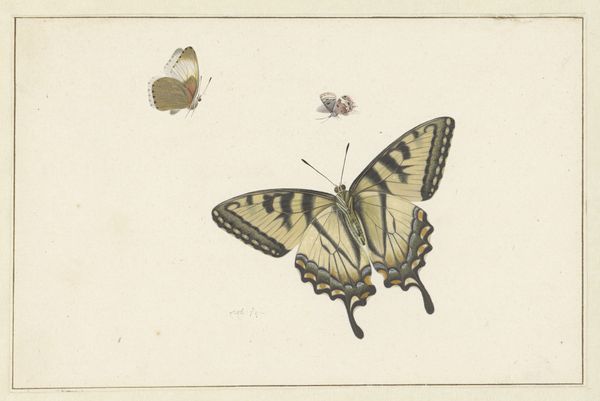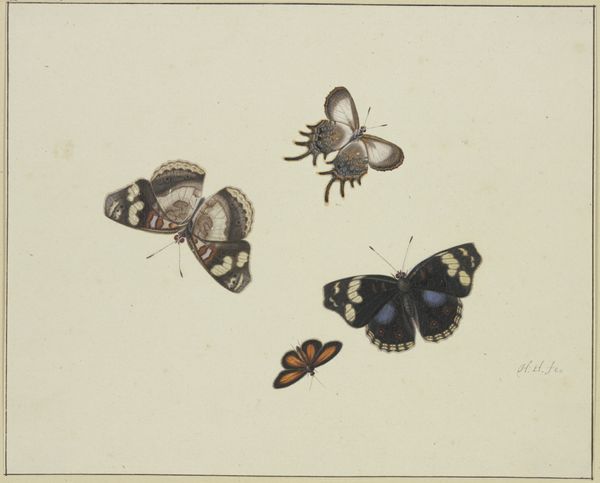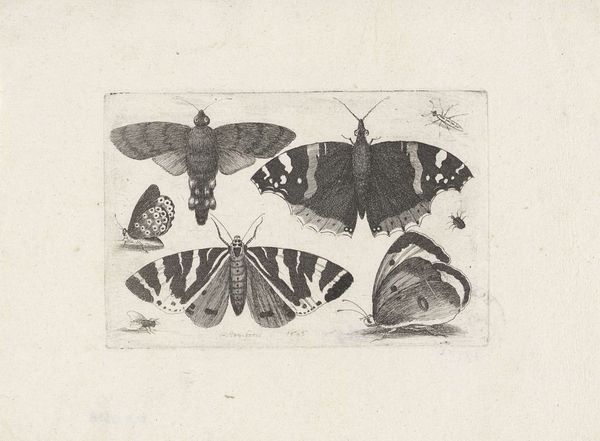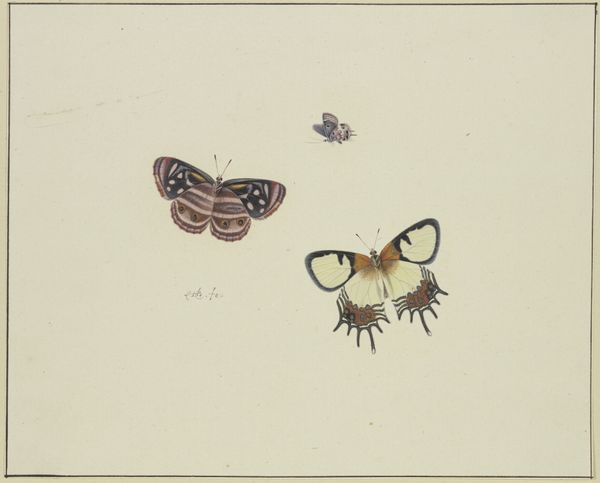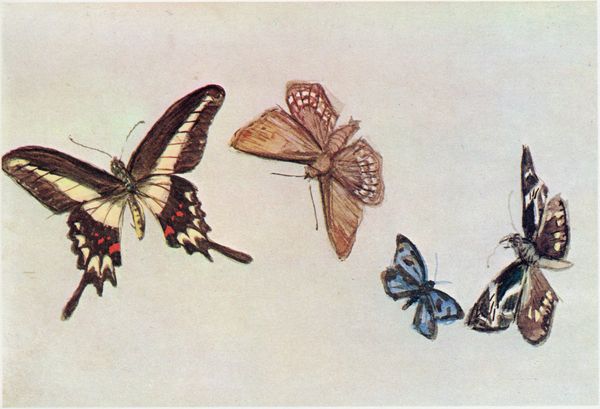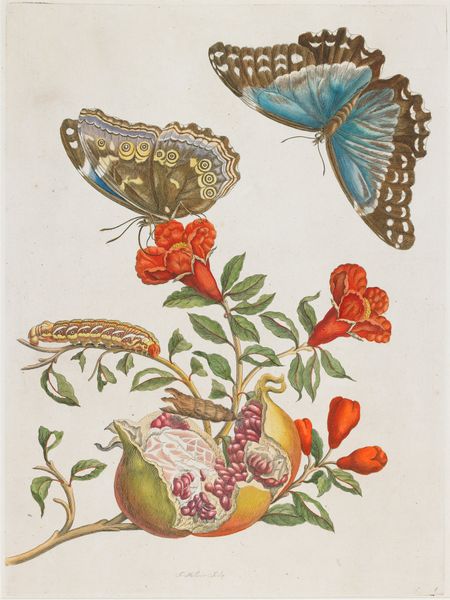
drawing, paper, watercolor
#
drawing
#
dutch-golden-age
#
paper
#
11_renaissance
#
watercolor
#
botanical drawing
#
watercolour illustration
#
botanical art
#
watercolor
#
realism
Dimensions: height 240 mm, width 351 mm
Copyright: Rijks Museum: Open Domain
Curator: This is a page featuring five butterflies and two flies, a watercolor and pen drawing on paper by Pieter Withoos, dating from about 1674 to 1692. It comes from the Dutch Golden Age. What captures your eye? Editor: There's an old-world stillness about this. It's delicately rendered, like a specimen pinned to a board, but still imbued with a quiet energy. Almost like looking at a memory. Curator: The arrangement, scattered across the page, does lend itself to that feeling of fleeting observation. Butterflies, of course, often represent transformation, the soul, or even resurrection in various cultures. Editor: And flies... don't forget those unsung heroes! Decomposition and change, I suppose. What I find fascinating is that they all coexist so harmoniously in a single frame here. There is not exactly that beauty we usually consider. The drawing style seems both delicate and deliberate. I suppose, it could be connected with the fleeting character of insects themselves. Curator: Right, the transient beauty, the "memento mori" aspect – a reminder of life's brevity. Think of the Dutch Vanitas paintings. Even in a seemingly simple illustration, there can be layers of symbolic weight. Insects in art and life serve as symbol for various different stages of life. It also makes me reflect how a single butterfly or even a fly carries that heavy cultural weight throughout the ages. Editor: It's also that realism—they’re rendered with such fidelity! This isn’t some idealized vision of nature; it's real, gritty…almost scientific in its accuracy, even down to the subtle venation in the wings. Curator: Well, Withoos was known for his precise botanical and zoological studies, serving prominent patrons. He's clearly trying to capture these insects in all their detail, recording these natural marvels but the goal wasn't purely scientific. Even a seemingly objective recording reflects choices and biases. Editor: True. There is the beauty in the careful arrangement. It feels more poetic now. Like he wanted to eternalize something temporary on one piece of paper. Thanks to this, it makes you consider the fragile character of this type of drawings made on paper as well. I mean, paper is extremely sensible for different climate conditions. Curator: It is an exquisite piece of art that preserves some part of our collective memory. It reminds us to pay attention and look at the small things as well, it has so much cultural richness for centuries and ahead of us. Editor: Absolutely, from the vibrant life of little beings buzzing nearby to reflections on mortality and meticulous observation, this has certainly given me some food for thought.
Comments
No comments
Be the first to comment and join the conversation on the ultimate creative platform.
